
Epic Mexico to Costa Rica Itinerary



Bienvenidos! Welcome to Mexico. You’ll kick things off in Playa del Carmen – it’s recommended that you book a couple of extra days here to chill on the coast and explore at your own pace before the trip starts. Your adventure begins with a welcome meeting at 6 pm at your hotel. If you arrive early, maybe go snorkelling or cycling, or simply stroll along the sandy playa (beach). Tonight, head out with your group leader for an included dinner at a local taquisa for a selection of delicious tacos – make sure you order one with freshly caught fish! To improve your lingo, your group leader will conduct an informal Spanish lesson between bites, so that you can understand your burritos from your banos.
Today, you’ll hop on a local bus and travel along the Caribbean coast to Tulum, where it's all about that laidback life on the white sands of the Yucatan Peninsula. Head out on a leader-led orientation walk around Tulum and maybe visit one of the best-looking Maya sites – the Temple of the Frescoes. See how this pre-Columbian walled ruin city clings to a clifftop overlooking the ocean and grab some cool photos before heading for an optional swim in the archaeological zone. Tonight, maybe kick back and watch the waves roll in at a beachside bar with a margarita.
With a free day to relax in Tulum, you can settle into the laidback Mexican vibe. Maybe rent a bike and cruise around the area on two wheels. The town is heaving with hip cafes and restaurants with many vegetarian and vegan options. There are also plenty of places to relax the mind and the body with yoga and meditation. Maybe you’d like to explore Dos Ojos (two eyes) – one of the area's most famous cenotes (freshwater rock pools) and an underwater world full of stalagmites and stalactites. Tonight, explore the vibrant nightlife of Tulum with your fellow travellers.
Say adios to Mexico and hello to Belize. You’ll have a long travel day today, so make sure you grab a window seat if you can or get stuck into a good book. This is also the perfect opportunity to get to know your fellow travellers a bit better! Drive by local bus to the border, then carry on to Belize City. Let the wind and the sea wash the travel sweat away with a 1-hour speedboat ride when you arrive – to the palm-fringed island of Caye Caulker.
Your time in Caye Caulker is all about taking it easy. It’s said that the pace of life is so slow here that it's almost backwards! If being underwater is your thing, maybe head out to Hol Chan Marine Reserve, the world's second-longest barrier reef. Snorkel among the colourful corals and see tropical fish, sharks and manta rays. You can also take day trips to other Cayes nearby as each island has its own Caribbean charm. Belize is the only English-speaking country in Central America, which makes chatting with locals much easier here.
Today is another free day to take up any other optional activities you like, or to simply pull up a towel and relax on the beach with a book, a cocktail or some friends. If you’ve already been snorkelling, maybe continue the marine exploration with a manatee tour. Get more active with sea kayaks and stand-up paddle boards or go the other way and just chill out. The island's also great for food – famed for its lobster and super tasty meals cooked on the side of the road. How about some grilled shrimp and a rum and coke made with the local fire water.
Leave island paradise behind today and return to Belize City by boat, before taking a local bus to San Ignacio via Belize’s capital, Belmopan. The local buses here are a little more basic than in Mexico, but this is a great opportunity to mix with Belizeans and get a feel for local life. Arrive in San Ignacio – a lively town surrounded by fast-flowing rivers, waterfalls and Mayan ruins, making it the best base for exploring the region. Your afternoon is free, so maybe visit the Chaa Creek butterfly garden, or try one of the barbeque street stalls for a char-grilled chicken leg for dinner.
There is heaps to do in San Ignacio, so your free day has endless possibilities. The cave of Actun Tunichil Muknal is a living museum of Maya relics and you can wade through its waters until you reach a bunch of spooky 1400-year-old crystallised skeletons. You could take a day tour to the Mountain Pine Ridge area to visit waterfalls and swimming holes or go down the Macal River in canoes or tubes. If you prefer a slower pace, maybe take a trip to Xunantunich – an impressive Maya ceremonial centre with panoramic views. Getting to the site is half the fun, as you'll need to take a hand-cranked boat down the river. Belizeans are super friendly, so tonight, maybe walk down Burns Avenue and join the locals for a chat in one of the many restaurants or streetside stalls.
Today you’ll leave San Ignacio, cross the border and get dropped off at Tikal National Park – often referred to as the Maya forest. Check-in at your hotel before exploring the Maya ruins of Tikal. Pass through the lush jungle vegetation, and if you've got the energy, climb Temple IV to take in the epic canopy views. While here, there's also the option to check out more of the area with a guided tour or to fly through the canopies like a toucan with a zipline.
Head from the jungle to the lakeside town of Flores this morning. Here, there's time to grab some lunch and quickly explore the town. Then it's back to the private vehicle to Rio Dulce. When you arrive, you’ll transfer to the hotel by boat. The easiest way to get back into town is also by boat, which can be organised through the hotel – or you can take a short walk through the jungle. Take some time to absorb the atmosphere of this laidback Caribbean town, which feels quite different from the inland communities. A highlight for many guests is the 'Casa Natural' – an open-air accommodation with screened-in rooms, shared bathrooms and a lounge looking out to the surrounding jungle.
There is a load of kick-ass activities to choose from in Rio Dulce today. Take a scenic boat trip down the river to Livingston – a laidback town on the Caribbean coast that offers the unique experience of local Garifuna culture. Go boating on the lake, relax in the thermal hot springs or explore the nearby San Felipe fort in Livingston. You could also hike through the dense forest of the surrounding Chocon-Machacas Natural Reserve and spot the protected manatees of the area.
This morning you’ll travel to Antigua, where you’ll spend the night before heading to Lake Atitlan. When you arrive, maybe stroll around the city and tuck into some tasty tamales (a local dish served in a corn leaf) or pepian (a spicy meat stew of chicken, beef and pork in a dark sauce). You'll find the best value food in the square next to the La Merced Church.
Travel by private vehicle to the famous market in Chichicastenango (nicknamed Chichi market). This is the most colourful market in the country, where on Thursdays and Sundays, locals come from the surrounding villages to sell their wares and the streets are lined with stalls where you can stock up on cool trinkets. After visiting Chichi, head to Panajachel on Lake Atitlan, where you'll check in to your hotel. Tonight, you’ll join your group for dinner at a local pupuseria.
This morning, make a trip to San Juan La Laguna to immerse yourself in Mayan village life. Visit a local midwife to learn about this traditional and sacred art. Then visit the village's medicinal garden before a hands-on workshop where you'll learn about Mayan textile weaving and dyeing techniques. Hungry yet? Settle in for a homestyle lunch with your hosts and chat about life in the village. This is the perfect way to really immerse yourself in local culture and get off the beaten track. In the afternoon, you’ll return to Panajachel and soak up the views of deep blue Lake Atitlan with a free evening.
After breakfast, hit the road back to Antigua – three nearby volcanoes dominate the horizon, creating a truly unique landscape. Join your leader on a walk to orientate yourself around the World Heritage-listed city full of cobblestones, leafy town squares and ornate churches. There are hushed museums and lively Indigenous markets to explore here, or you can cycle the countryside and chase amazing views of mountain peaks and deep valleys. If you're into salsa dancing or if you'd just like to learn some moves, Antigua is the place to be! Many dancing schools offer hourly lessons, so maybe sign up and move your hips. Tonight, why not bring your freshly learned dance moves, shout a round of mojitos and dance the night away.
You have a free day in Antigua today, so why not explore the vibrant buildings and curved archways further, or hike around the puffing volcanoes of Pacaya, Agua and Jumaytepeque. The number one stop for any chocoholic should be the ChocoMuseo, where you’ll get a history lesson and, more excitingly, participate in a chocolate-making workshop. For those more interested in the other famous Central American bean, you can go on a coffee tour, visit the plantations, do some tastings and even buy some for the road. Tonight, you’ll have a second meeting at 6 pm to meet your new fellow travellers.
Today will be an early start as you journey across the Guatemalan border to your next destination, Cerro Verde, El Salvador. From rolling hills to rolling R’s, watch the world go by from the comfort of your private vehicle as you travel through lush volcanic landscapes and endless mountain terrain while learning the local lingo from your leader in an informal Spanish lesson. Arrive in Cerro Verde in the afternoon and enjoy the rest of the day at your leisure.
Today is all about fuelling up with local favourites and getting outdoors! Maybe visit Santa Ana’s volcanic crater for spectacular views of Lake Coatepeque, Juayua and Izalco Volcano. Or, instead of admiring the view from the crater, why not take a dip in Lake Coatepeque. There are many ways to keep busy in one of El Salvador's most beautiful national parks. El Salvador is also home to pupusas (a flatbread made from cornmeal and often stuffed with fillings like cheese, fried pork or refried beans), and tonight, you’ll watch a pupusa-making demonstration, then try some for yourself! Yum!
This morning you’ll continue south by private vehicle, passing through the capital of San Salvador on your way to San Miguel. Resting in the shadows of Chaparrastique, an active volcano sets the backdrop to this vibrant town. San Miguel has rebuilt itself into one of the country's largest and most populated cities since facing a severe earthquake in 1917. This afternoon, explore the city on foot, opt to take a swim at the Cuevas de Moncagua or find a good dinner spot to hole up with a few new travel buddies.
Say a quick hola and adios to Honduras as you cross through two borders to reach ‘the land of lakes and volcanoes’ – Nicaragua (or Nica as it’s known locally). The drive will be well worth the ride as you’re welcomed into the artsy and sophisticated city of Leon. Why not refuel after your journey with some traditional Nicaraguan dishes like gallo pinto (this hearty combination of rice and beans is considered a national symbol) or quesillo (a cheesy treat made of corn tortillas, pickled onion and sour cream). Home to one of the oldest universities in Central America, Leon is considered a ‘college town’ and is known for its youthful, fun atmosphere and nightlife. Why not head out with the group tonight for an optional salsa dance class.
You’ll join your leader on an orientation walk around Leon this morning. Then, take some time to explore on your own, maybe checking out the Basílica de la Asuncion – Central America’s largest cathedral. Or stop by the Museo Historico de la Revolucion for an insight into revolutionaries who fought hard for the freedom of their country. You might like to go volcano sandboarding (this is the only place in the world where you can do it) in the dunes. If you’re feeling peckish, why not fill up on the traditional breakfast of scrambled eggs and gallo pinto before heading to Granada – founded in 1524 and draped in colourful architecture, this city is set on the banks of Lake Nicaragua and surrounded by active volcanoes.
This morning you’ll have breakfast with your group at Cafe de las Sonrisas – a local café run entirely by deaf people. The café's owner is aiming to bridge the gap and inspire other business owners to employ local people living with disabilities. Then, you’re free to explore Granada – one of Central America’s least spoiled towns. Maybe you’d like to take a guided tour of the city, visit the markets or wander the cobblestone streets, snapping photos of the colourful buildings. If you’re an adventure enthusiast, opt to hire a kayak and paddle around the islets of Lake Nicaragua, rent a bike and ride to Laguna De Apoyo (a 200-year-old lake set into a lush forest crater), or hike through the flora and fauna along the Mombacho volcano crater trail. For a cultural insight into the heritage of the Nicaraguan people, the city of Masaya or the ‘City of the Flowers’ offers a mixture of folkloric entertainment, from marimba music to street theatre. Tonight, maybe spend your evening along Calle la Calzada, where you can grab a drink at one of the many outdoor bars and watch the wandering performers bring the street to life.
This morning, travel by local bus to Rivas, where you'll transfer to San Jorge ferry port by taxi. Catch a 1-hour ferry across Lake Nicaragua (the largest in Central America and the tenth largest freshwater lake in the world) to the island of Ometepe and head to your hotel. Hourglass-shaped Ometepe Island was formed by two volcanoes rising out of Lake Nicaragua (Ometepe literally means two volcanoes in the Nahuatl language), and the deep jungle is home to exotic wildlife such as monkeys and parrots. Sit on the shore and watch fishermen return from a long day on the water with their catch or hike to a nearby waterfall.
Take advantage of a free day in this bucket list location to discover the island at your own pace. Maybe hike to the summit of Maderas volcano – but be warned, at 1394 m above sea level, this trek is no walk in the park. You might prefer to splash around in the natural springs, soak up the sun on the shore or check out the island's petroglyphs (ancient rock carvings). If you like watermelon, coffee, banana and citrus fruits, this is the place for you as you’ll have loads of delicious fresh fruit to feast on. Tonight, head to Los Ramos – an Indigenous community in the middle of the island’s volcanos – for a cooking class. Learn traditional techniques used to make Nicaraguan dishes like nacatamales (a dough-based snack often filled with meat and steamed in banana leaves) before sitting down for a meal together.
Today you’ll journey by ferry and public bus to San Juan del Sur – a laidback surf town on Nicaragua’s southwest coast. Though the beach that lines the town’s horseshoe bay isn’t particularly great for swimming, you don’t need to travel far to find beautiful golden beaches with year-round waves. You’ll have some free time today to acquaint yourself with this fun town.
Enjoy a free day exploring San Juan del Sur’s colourful coastal scenery. You might like to head south to La Flor beach reserve, where it’s possible to see olive ridley, hawksbill, leatherback and green sea turtles nesting between July and November. A massive statue of Christ (the largest in Central America) sits atop a cliff above the bay, so why not hike to the top for spectacular views of the town and the Pacific. In the evening, the city boasts a variety of great bars and restaurants where you can share a meal or a few drinks with the group.
Say adios to Nicaragua and continue your journey south to Costa Rica this morning. Take a bus to the border and then travel by private vehicle to Monteverde. Monteverde was founded as an agricultural community in 1951 by a group of North American Quakers – these environmentally-aware settlers also established a small wildlife sanctuary, which has since grown into the internationally renowned Monteverde Cloud Forest Biological Preserve. Cloud forests are similar to rainforests, but instead, draw their water from a semi-permanent cloud covering the region. Constant mist in the forest makes it feel like a nightclub but with less bass and more fresh air. This is truly a nature lover's paradise! More than 2000 plant species, 320 bird species and 100 mammal species call Montverde home – be sure to keep an eye out for the resplendent quetzal, one of the most elusive birds in the world.
Today you have a free day to discover the reserve. Monteverde is not for the faint-hearted, so bring your sense of adventure, and a solid pair of shoes and have a little fun with the giddy heights. Maybe hike through the cloud forest, check out the area by mountain bike or fly over the canopy on a zip-line tour. Another way to see the forest from above is to take a tour along a series of suspension bridges 40 m above the jungle. You can explore the park on your own or arrange for a local guide to accompany you. The guides are very knowledgeable and happy to engage in conversation. To see some guaranteed wildlife up close, visit the butterfly and insect gardens or the serpentarium. There are also several cooperatives worth visiting in the local communities.
Continue your journey through Costa Rica and take the scenic route to La Fortuna. Travel by shared minibus to Lake Arenal, then cross by boat. On a clear day, you'll see fantastic views of the surrounding area. On the other side of the lake, re-board the minibus and continue to your destination. La Fortuna is a small town just a few minutes from Costa Rica's most famous volcano – Arenal. While you're here, you might like to take some photos of the volcano reflected in the lake.
There are plenty of optional activities to participate in today. Maybe take a guided nature hike through the lush forest surrounding Arenal Volcano, keeping an eye out for rare plants and animals or opt to see the forest from a series of hanging bridges. Check out the 70 m high La Fortuna waterfall or get wet with some water sports on the lake, like stand-up paddle boarding. The volcano’s inner workings also mean that the area is home to several thermal hot springs – an ideal way to relax in the middle of nature. Alternatively, a boat safari down the Celeste River offers the opportunity to see lizards, crocodiles and tropical birds in their natural habitat.
This morning you’ll take a local bus to Costa Rica's capital – San Jose. Situated in the fertile Central Valley and home to over half the country's population, San Jose has lively markets, intriguing museums and a dynamic atmosphere. A good place to start your exploration is the central plaza. The Gold Museum also has a fantastic collection of Indigenous gold art. If you're in the mood for some shopping, head to the Mercado Municipal de Artesanias or the city's Central Market, where you can buy anything from handicrafts to seafood. This afternoon you might want to rejoin your group for a final farewell dinner (or margarita) and say muchas gracias to your Central American journey.
Today your Central American adventure comes to an end, and there are no activities planned. As there's a lot to see and do in and around San Jose, it’s recommended you stay here for a few days to make the most of the city. If you'd like to extend your visit, just speak to your booking agent ahead of time.

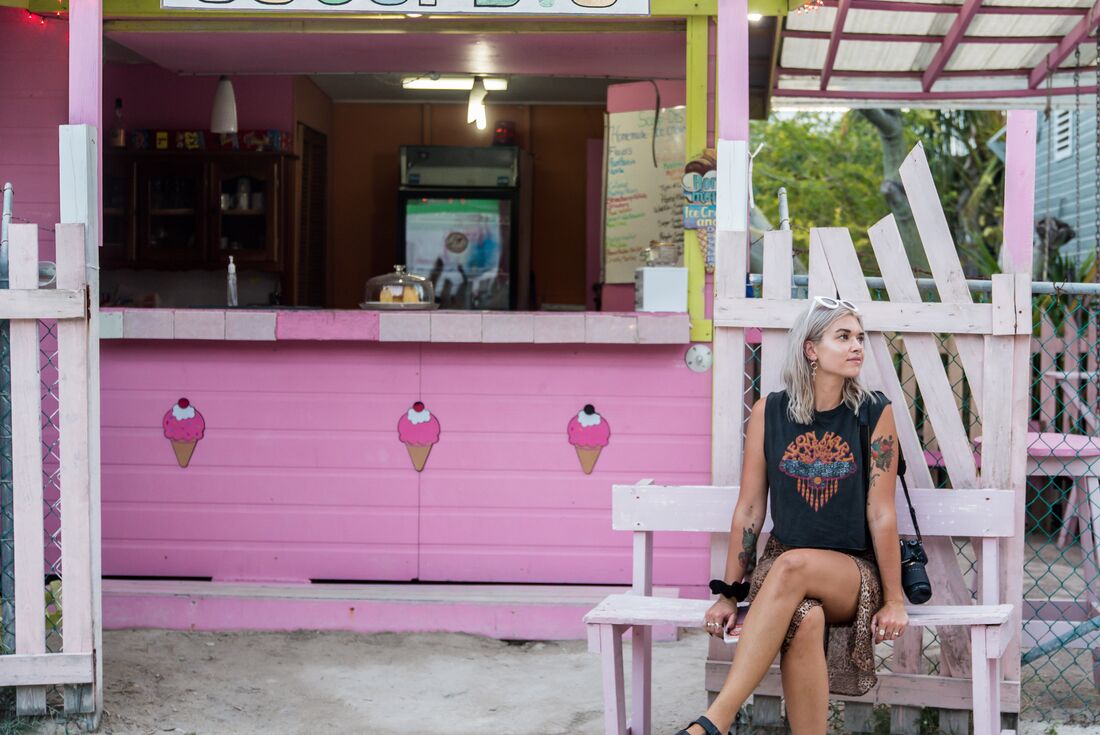
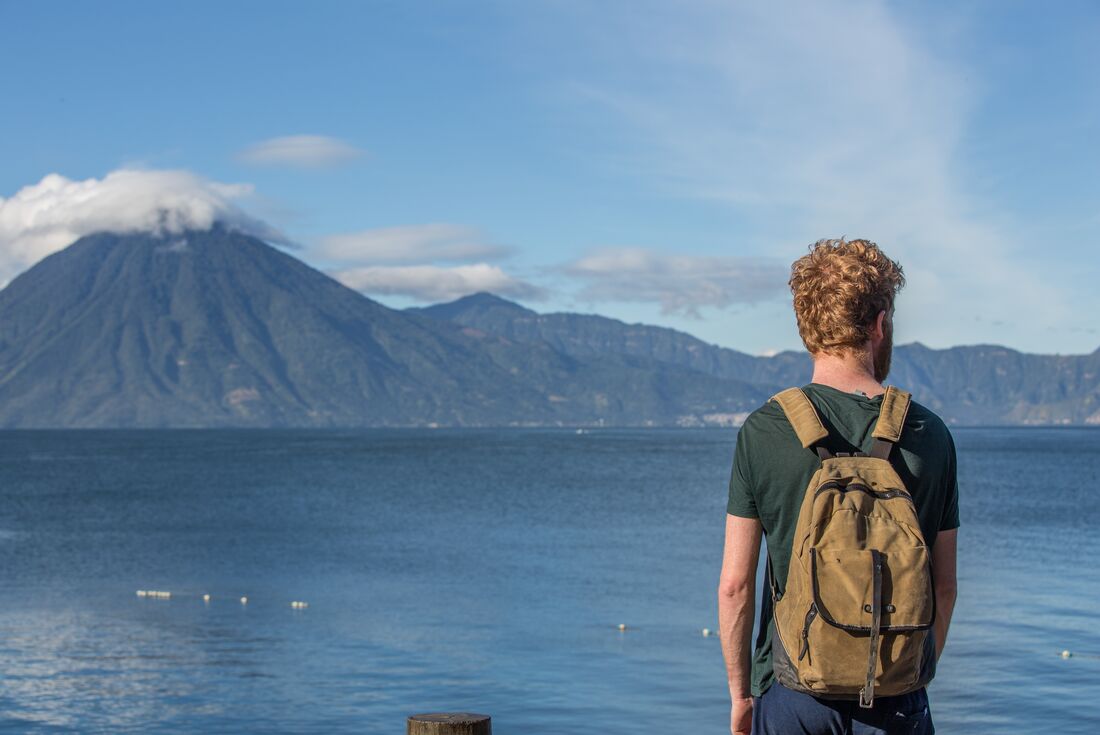
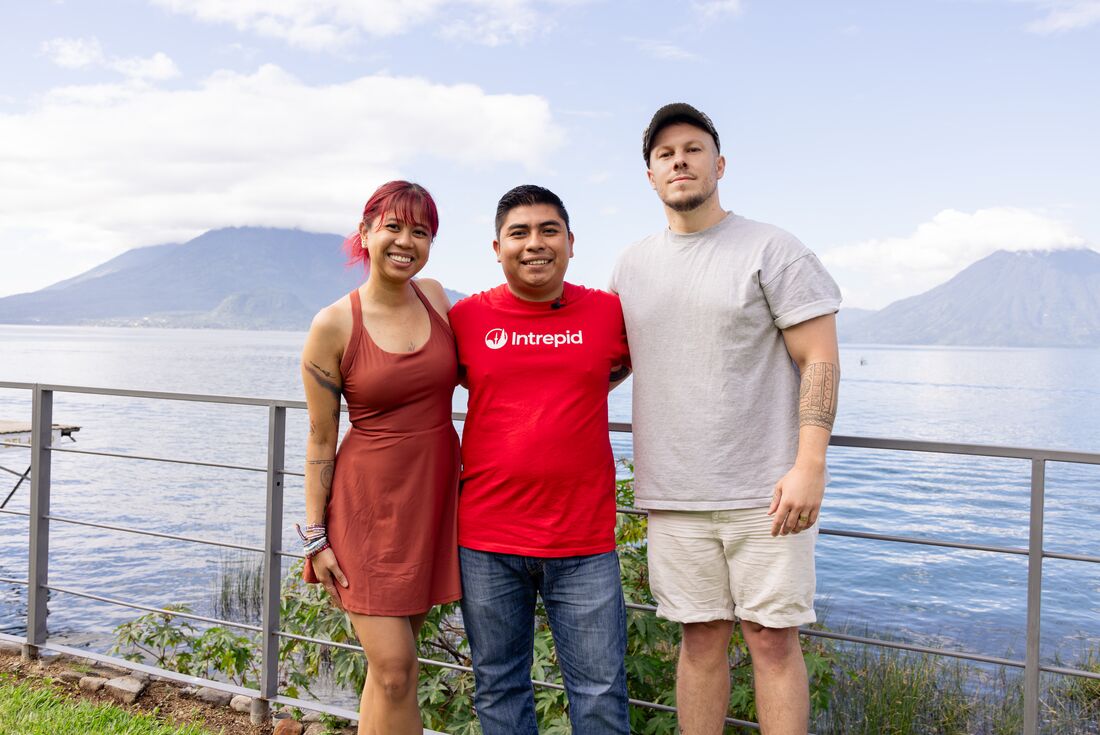

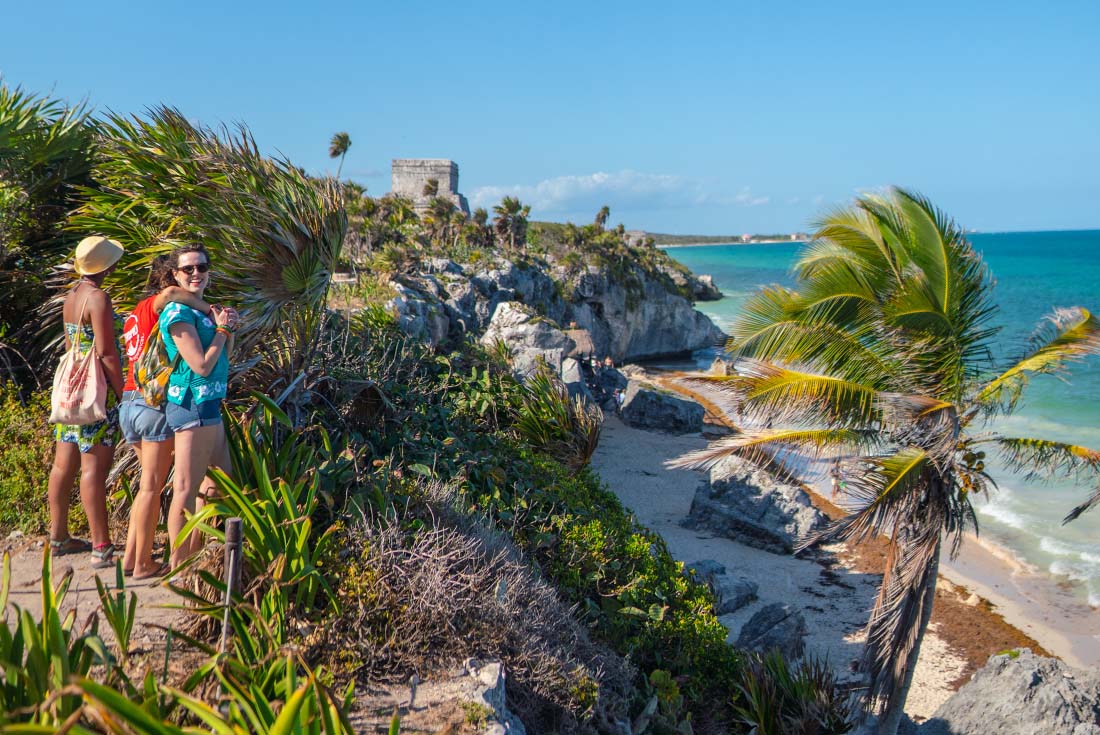
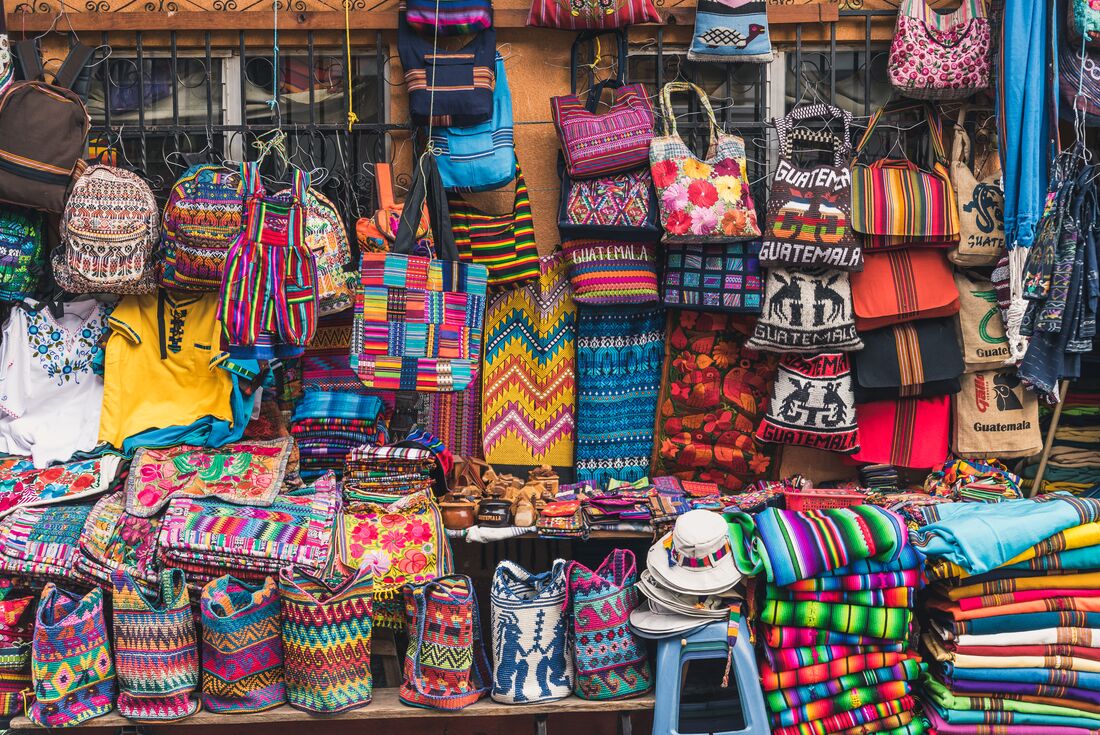
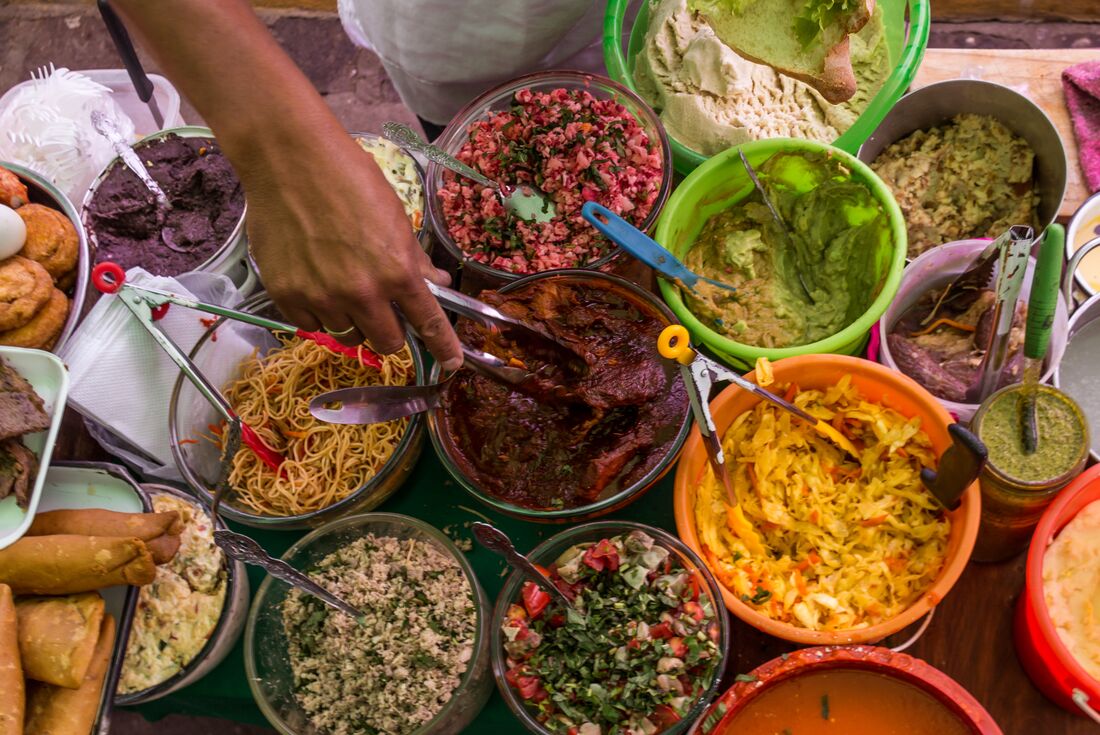

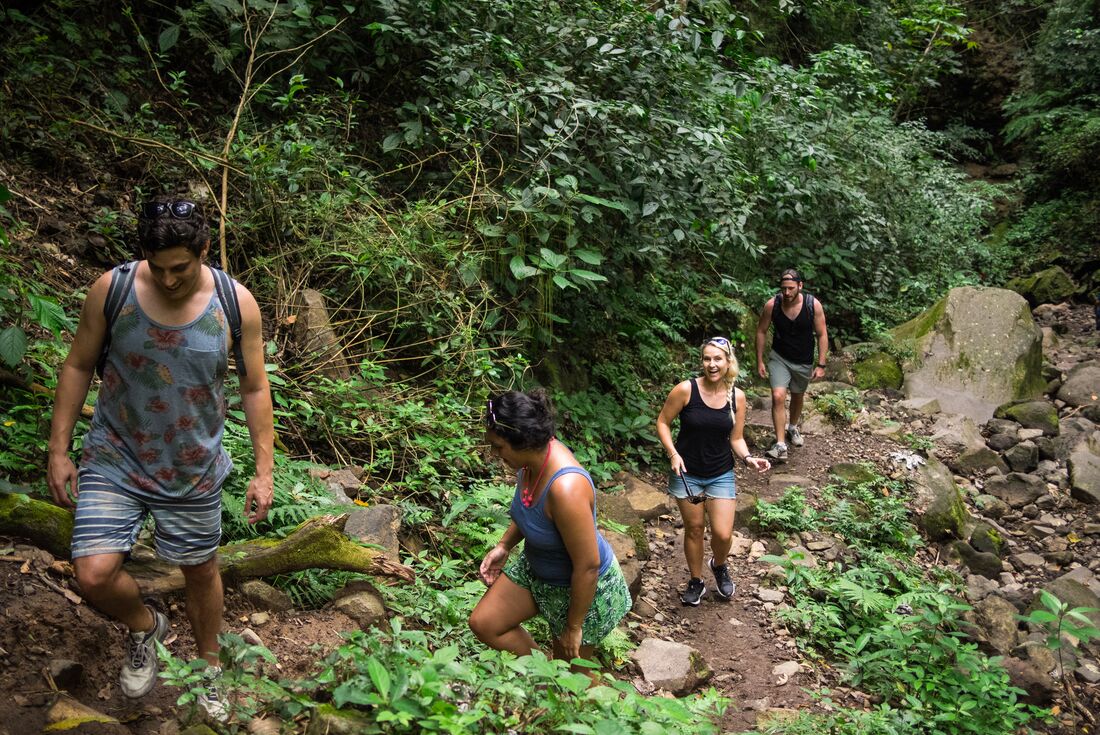

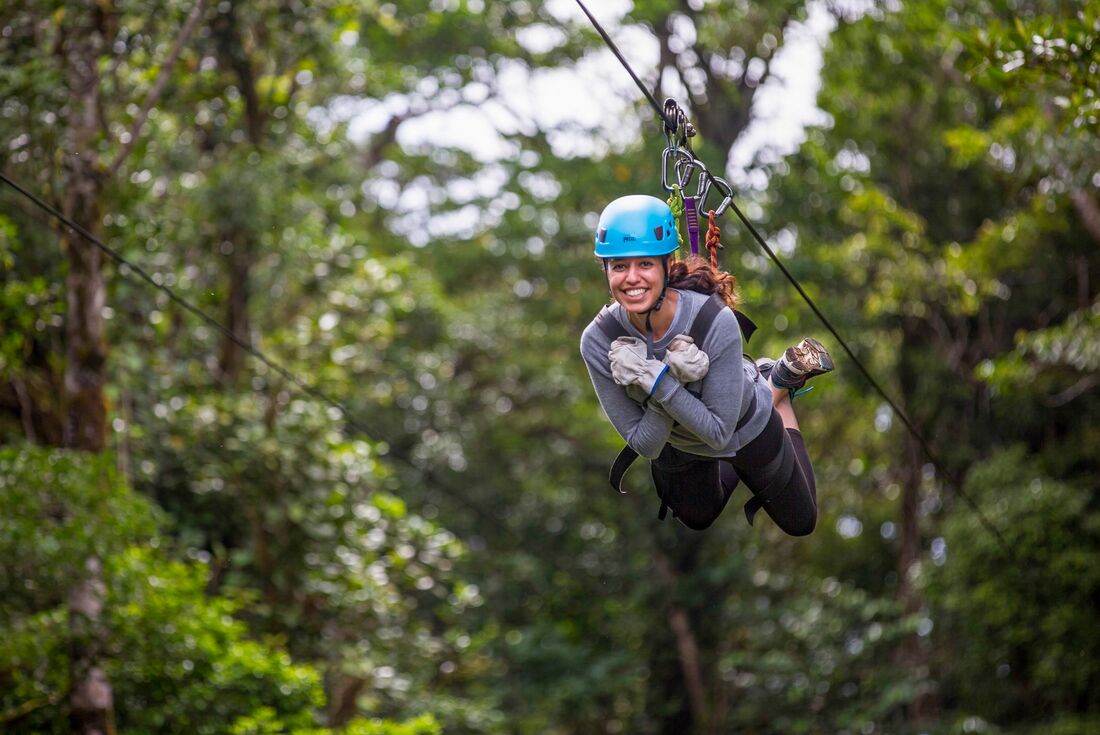
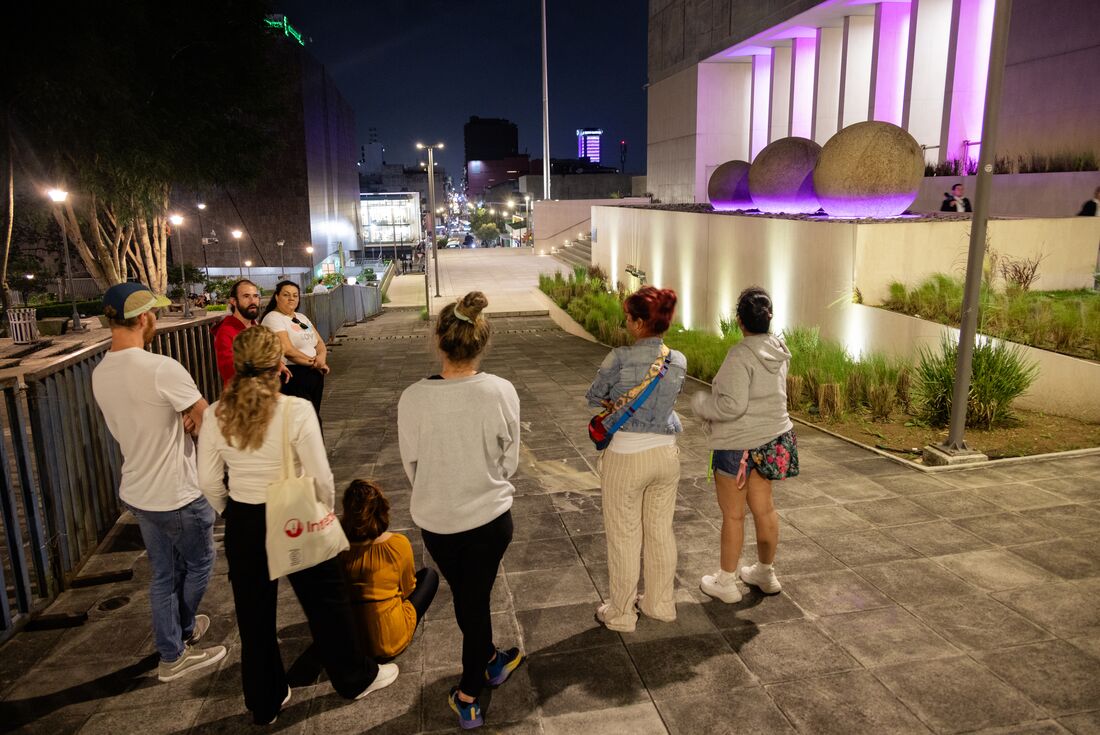
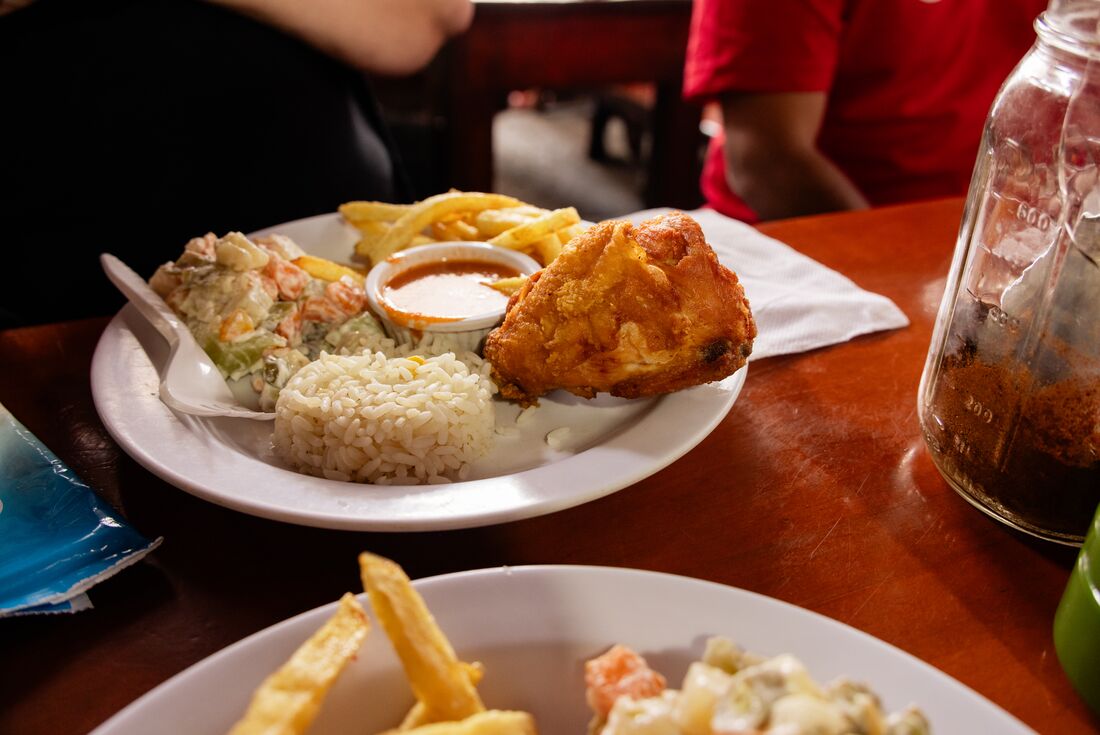
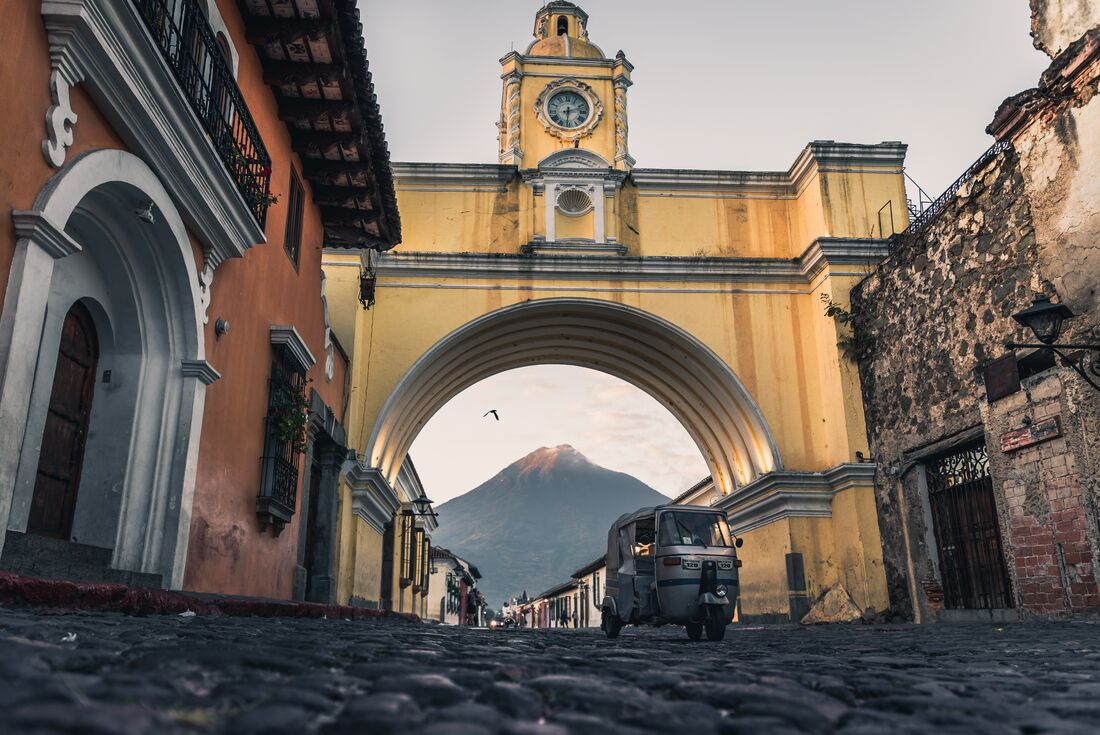
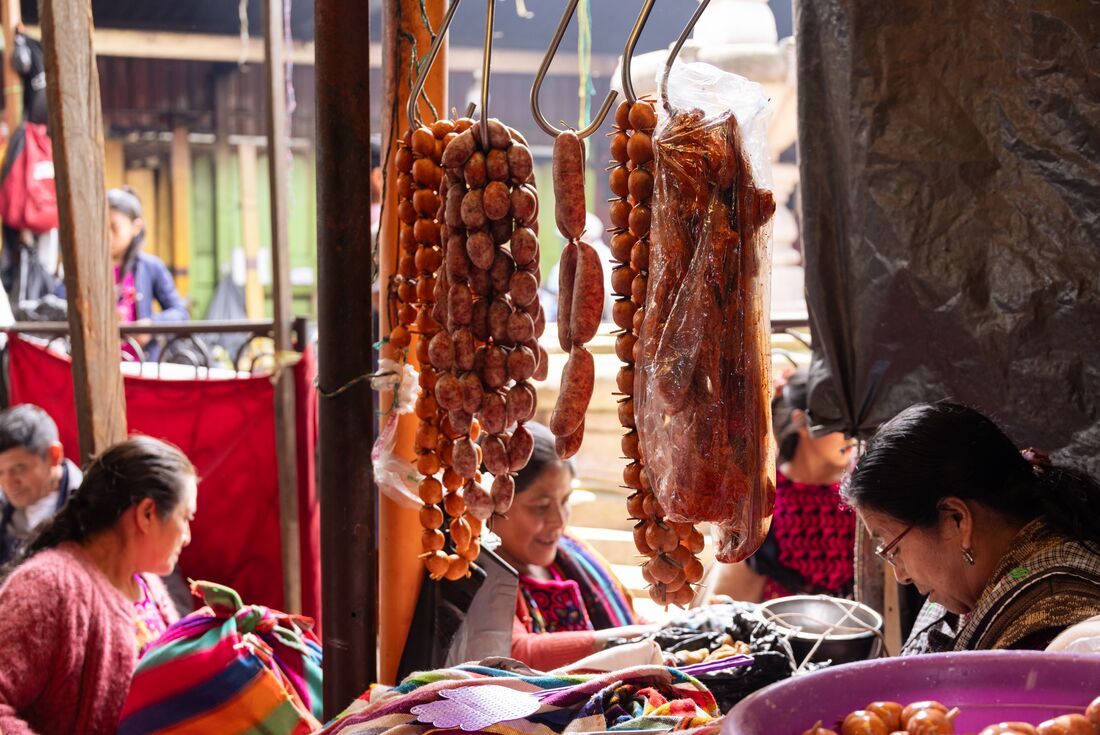

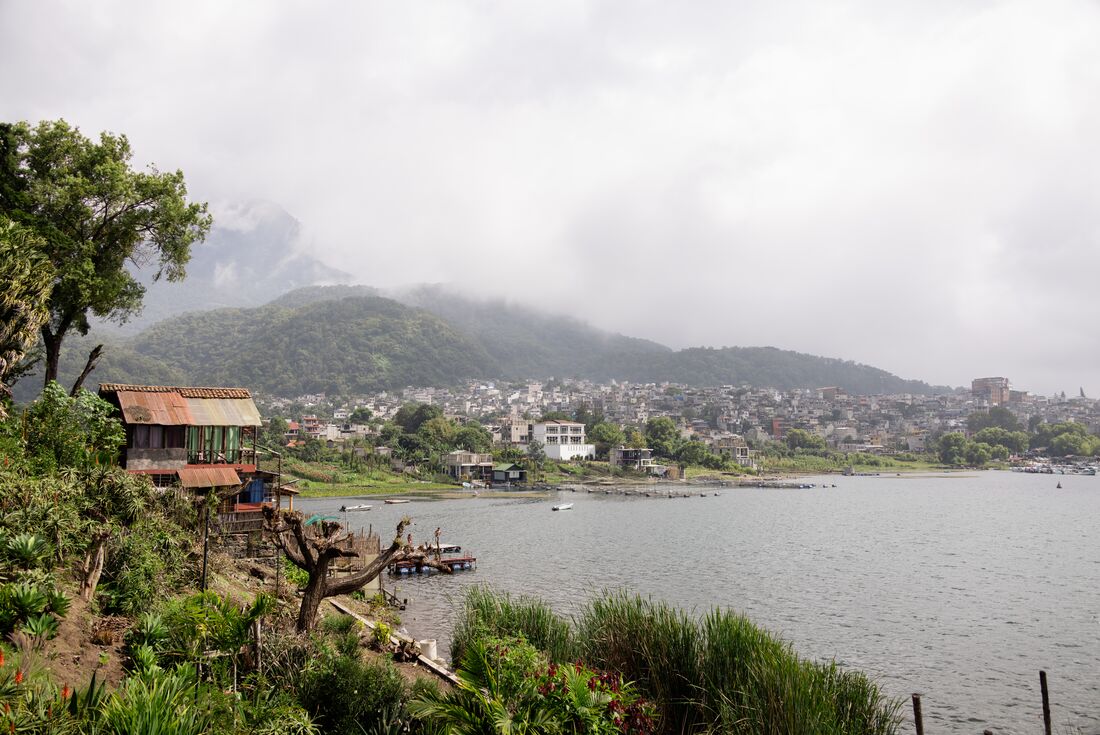

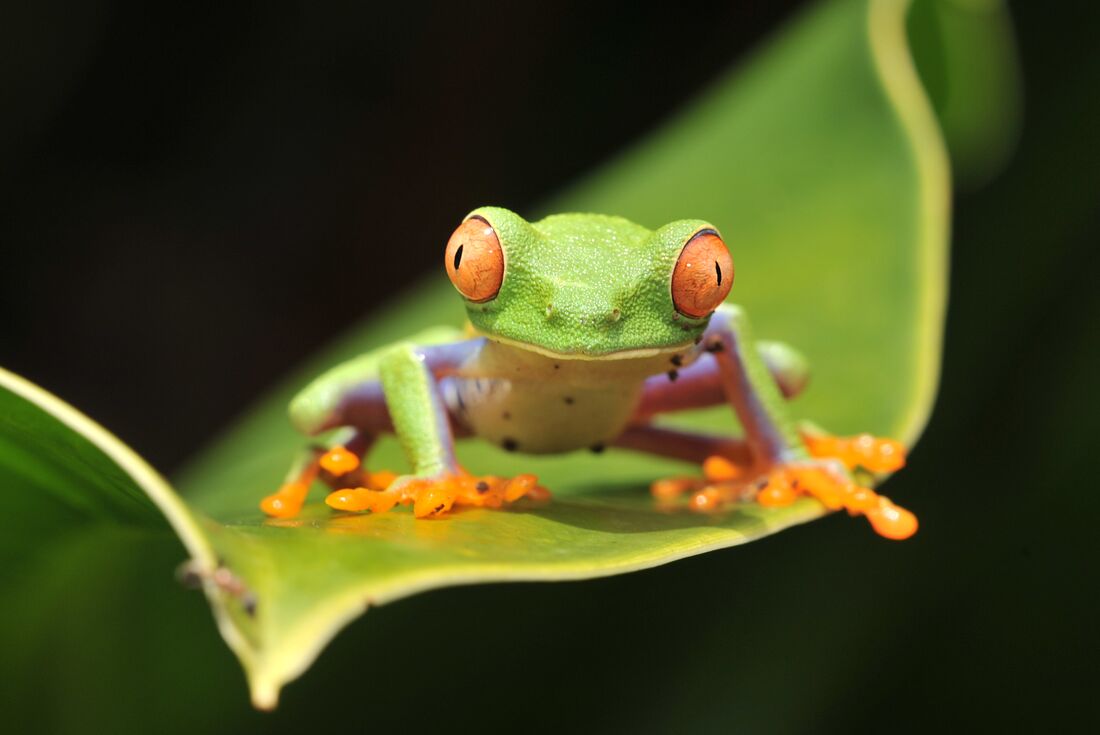
Leader-led Informal Spanish Lesson
Tulum walking tour
Caye Caulker - Leader-led orientation walk
San Ignacio - Leader-led orientation walk
Tikal National Park - Archaeological Site Tour (Entrance fee & Transport)
Chichicastenango - Market Visit
San Juan La Laguna - Weaving & Dyeing experience
San Juan La Laguna - Midwife home visit
San Juan La Laguna - Medicinal Garden
Antigua - Leader-led orientation walk
Leader-led Informal Spanish Lesson
Cerro Verde - Salvadoran Pupusa cooking demonstration
Leon - Leader-led orientation walk
Granada - Breakfast at El Cafe de las Sonrisas
Los Ramos Community - Cooking Class
Monteverde - Leader-led orientation walk
La Fortuna - Leader-led orientation walk
San Jose - Leader-led orientation walk
Enjoy traditional Guatemalan hospitality with a homecooked lunch in a local home in San Juan La Laguna, after visiting a local midwife, walking through medicinal gardens and experiencing a weaving and dying workshop.
Head to Tikal National Park within the dense Maya forest to explore ancient Maya ruins at the archaeological site – you might like to opt to swing through the canopy on the optional zipline experience!
Have breakfast at Cafe de las Sonrisas – a local café run entirely by deaf people. The café's owner is aiming to bridge the gap and inspire other business owners to employ local people living with disabilities.
Island life doesn’t get much better than Ometepe in Nicaragua and Caye Caulker in Belize – volcanoes, wildlife-rich rainforests, stunning beaches, ancient rock carvings, laidback vibes, palm tree forests and a massive lake are all at your disposal.
Get a taste of six different countries in Central America on an epic Latin adventure that takes in the sights and offers a whole heap of optional activities too! You’ll have loads of free time to choose your own hike, snorkel, kayak, swimming or dancing adventure.
Hotel 12 Bees, Calle 12 Bis con 30 Avenida Nte., Playa del Carmen, 77710, MEXICO, Phone: +52 984 361 3304
Hotel El Sesteo, 150 sur de Torre Universal , San Jose, 10101, COSTA RICA
1. A single supplement is available if you’d prefer not to share a room on this trip. The single supplement excludes Day 9 (Tikal), Days 10 & 11 (Rio Dulce), Days 13 & 14 (Lake Atitlan) and Days 25 & 26 (San Juan del Sur) where you will be in shared accommodation and is subject to availability. Please speak to your booking agent for further information.
2. This tour includes accommodation in multi-share rooms (triple and quad). This means travelers on the same booking may be split between rooms due to single gender allocation.
3. Please be careful when booking flights from San Jose; make sure you fly out of Juan Santamaria International Airport [SJO]. Please do not book flights from Norman Y. Mineta San Jose International Airport [SJC] as this is located in California, United States.
4. As per updated Nicaragua entry requirements, customers are currently required to supply a copy of their passport front page to their booking agent no later than 15 days prior to departure.
5. IMPORTANT FOR UK PASSPORT HOLDERS: You must obtain a single entry visa to Honduras before traveling on this trip. Due to reported delays in securing embassy appointments, we recommend checking appointment availability with the Honduran Embassy before confirming your travel plans. See the Passports, visas and entry requirements section in your Essential Trip Information for details.
6. Under Honduran law, travelers under age 21 who are traveling unaccompanied or with only one parent must have written, notarized permission to travel (in Spanish) from the non-traveling parent(s) or guardian(s). Please check with your local embassy or consulate for specific requirements.
7. If you plan to travel with high-quality cameras or binoculars, please reference the packing section of your Essential Trip Information for details about Nicaragua's restrictions and regulations on these items.
While we always endeavour to provide the best possible holiday experience, due to the nature of travel and the areas we visit sometimes things can and do go wrong. Should any issue occur while you are on your trip, it is imperative that you discuss this with your group leader or local representative straight away so that they can do their best to rectify the problem and save any potential negative impact on the rest of your trip.
We recognise that there may be times when your group leader or local representative may not be able to resolve a situation to your satisfaction - if this is the case, please ask the group leader or local representative to speak to their direct manager.
You may also choose to provide details in your online feedback, which we ask you to complete within 30 days of the end of your trip. Please do be aware that it is very difficult for us to provide any practical help after the trip is completed, so informing us while still travelling will give us the opportunity to resolve the issue in real-time., For general contact details please use the following page: https://www.intrepidtravel.com/contact-us, In case of a genuine crisis or emergency, you can reach our local office on the numbers below:
, In the case of a genuine crisis or emergency, please contact our local office:
, Intrepid local operator: Available for phone call on +506 4600 6000
This trip involves some long days of travel by private and local transport. While this can be tiring, it's also a fantastic way to rub shoulders with the locals. , You’ll be crossing the borders between several countries on this trip and while it is usually straightforward, you may need to be patient. Ensure you’ve got your best car game ready if there are any delays!, Central America is hot and humid year-round. At night and in locations at higher elevations, it can get chilly. Protect yourself from the sun, bring light clothing you can layer and a waterproof jacket, and stay hydrated. Air conditioning may not always be available in your rooms. Occasionally, properties may require an additional charge for air conditioning., With so much to see and do, Costa Rica can sometimes be expensive. Expect to pay more than you would in other Central American countries., There are many opportunities to get active on this adventure. Some of the optional activities, especially the volcano hikes, require a moderate level of fitness and sturdy walking shoes. Want to take it easy? There are plenty of other things you can do instead., If you are traveling with a UK passport, a visa is now required to enter Honduras. Please ensure you check the Important Notes and Essential Trip Information for more details.
Enjoy traditional Guatemalan hospitality with a homecooked lunch in a local home in San Juan La Laguna, after visiting a local midwife, walking through medicinal gardens and experiencing a weaving and dying workshop. , Head to Tikal National Park within the dense Maya forest to explore ancient Maya ruins at the archaeological site – you might like to opt to swing through the canopy on the optional zipline experience! , Have breakfast at Cafe de las Sonrisas – a local café run entirely by deaf people. The café's owner is aiming to bridge the gap and inspire other business owners to employ local people living with disabilities., Island life doesn’t get much better than Ometepe in Nicaragua and Caye Caulker in Belize – volcanoes, wildlife-rich rainforests, stunning beaches, ancient rock carvings, laidback vibes, palm tree forests and a massive lake are all at your disposal. , Get a taste of six different countries in Central America on an epic Latin adventure that takes in the sights and offers a whole heap of optional activities too! You’ll have loads of free time to choose your own hike, snorkel, kayak, swimming or dancing adventure.
All group trips are accompanied by one of our group leader or local representative. The aim of the group leader or local representative is to take the hassle out of your travels and to help you have the best trip possible. Intrepid endeavours to provide the services of an experienced group leader or local representative however, due to the seasonality of travel, rare situations may arise where your group leader or local representative is new to a particular region or training other group leader or local representative.
Your group leader or local representative will provide information on the places you are travelling through, offer suggestions for things to do and see, recommend great local eating venues and introduce you to our local friends. While not being guides in the traditional sense, you can expect them to have a broad general knowledge of the places visited on the trip, including historical, cultural, religious, and social aspects. At Intrepid we aim to support local guides who have specialised knowledge of the regions we visit. If you are interested in delving deeper into the local culture at a specific site or location then your group leader or local representative can recommend a local guide service in most of the main destinations of your trip.
TRAVEL ADVISORIES & ALERTS
We recommend that you check your government's foreign travel advisory for the latest information about the destination before you travel. You will also need to ensure that your travel insurance covers you for all destinations and activities on your trip. We also recommend saving the phone number for emergency consular assistance for your government’s consulate in the destination/s you’ll be travelling. Links to travel advisories and any current travel alerts for our trips can be found here: https://www.intrepidtravel.com/travel-alerts
PERSONAL SAFETY
Ensure you have a secure method of carrying your passport, phone, credit cards and cash while travelling such as a money belt. Leave all other high value items, including jewellery, at home Use safety deposit boxes at hotels to store your valuables when available and ensure your luggage is lockable. Be aware of the risk of pick-pocketing and petty theft. Exercise caution when walking at night, don’t walk alone and stick to well-lit streets wherever possible. Be vigilant on public transport and look out for your fellow travellers. Take precautions such as carrying your bag in front of you and never leaving personal items unattended.
LGBTQIA+ TRAVELLERS
Intrepid welcomes all LGBTQIA+ customers on our trips, however we operate in parts of the world that are less accepting. We support LGBTQIA+ customers to travel to these destinations and are committed to ensuring they face no discrimination on any part of the trip we control. We recommend you visit Equaldex (https://www.equaldex.com/) and your government's foreign travel advice for LGBTQIA+ travellers when choosing your trip., https://www.intrepidtravel.com/safety-guidelines, PETTY THEFT AND PERSONAL SAFETY
While travelling there is always the risk of pick-pocketing and petty theft, particularly in the more touristy cities. We recommend that you exercise caution when walking alone at night and encourage you to walk together and only on main, well-lit thoroughfares. Be particularly vigilant on public transport. Simple measures like carrying your day pack on your front, not hanging your bag over the back of your chair or on the floor and wearing a money belt will reduce any chance that your valuables should go missing., MONEY WITHDRAWAL:
In order to avoid fraud and theft, it is advisable that you withdraw money from ATMs located inside banks or guarded shops during business hours only., LOCAL LODGINGS:
On this trip you will be staying in some restored houses and local lodges - these are one of the charms of this journey, but their staircases, balconies and passages etc may not always comply with western safety standards. Please do not expect elevators in these properties as they are preserved to their original state., FIRE PRECAUTIONS
Local laws governing tourism facilities in this region may differ from those in your home country and accommodation we use may not have a fire exit, fire extinguishers or smoke alarms., SEAT BELTS:
Please be aware that local laws governing transportation safety may differ from those in your home country and not all the transport which we use is able to provide seat belts., WATER SAFETY:
Please take care when taking part in any activities in the ocean, river or open water, where waves and currents can be unpredictable. It's expected that anyone taking part in water activities is able to swim and have experience in open water. All swimmers should seek local advice before entering the water.
PASSPORT
You’ll need a valid passport to travel internationally and most countries require your passport to have a minimum of 6 months validity, so remember to check the expiry date.
We need your passport information to get everything ready for your trip so it’s important that the information on your booking matches your passport exactly. Please take care to provide the correct details. We recommend carrying a copy of the photo page of your passport while travelling and leaving a copy at home with family or friends.
VISAS & ENTRY REQUIREMENTS
Many countries require a visa and obtaining the correct visa for your trip and any countries you may transit through is your responsibility. We recommend you check your visa requirements as soon as you have booked your trip. This will ensure you have time to prepare your documents and for your visa application to be processed. You can check the entry requirements for your nationality on your government's foreign travel advisories, consular websites or on our page here: www.intrepidtravel.com/visa-entry-requirements, MEXICO
If you exit Mexico overland or have stayed for 7 days or longer, you will need to pay the DNI (Derecho de no Inmigrante) fee of MXN 861 (USD 50).
State of Quintana Roo/Cancun Tourist Tax
Travellers aged 15 and over entering the state of Quintana Roo are required to pay a tourist tax of MXN 224 (USD 12). You can pay it online at the Visitax website: https://www.visitax.gob.mx/sitio/. Or you can pay in cash at Cancun airport prior to your departure from Mexico. As soon as the payment is completed, you will be provided with a QR Code that you must present to airport security before boarding your departure flight., BELIZE
If you exit Belize overland, there is an exit fee of BZD 40 and Protected Areas Trust contribution of BZD 7.50. These can be paid in USD or BZD. , GUATEMALA, EL SALVADOR, HONDURAS, NICARAGUA: CA-4 Border Agreement
The CA-4 is a border control agreement between four Central American countries: El Salvador, Guatemala, Honduras, and Nicaragua. This agreement allows for easier movement between these nations, similar to the European Schengen Area.
Your initial entry starts a single 90-day timer for all four countries combined. When entering any CA-4 country, tell immigration officials your total planned stay across all CA-4 countries, not just the country you're entering. This time limit cannot be reset by crossing borders between CA-4 countries.
Special info for UK passport holders and permanent residents: If you will be traveling to or transiting through Honduras during your trip, you must obtain a visa for Honduras from a Honduran embassy prior to your travel. Visas for UK citizens and permanent residents entering Honduras are not granted at the border. Due to potential delays in securing embassy appointments, check appointment availability before confirming your travel plans.
If you were born in the United Kingdom but are traveling with a passport from a country that does not currently require a visa to visit or transit through Honduras, you may still need a visa due to your country of birth. Please check with your local embassy or consulate for specific requirements.
, HONDURAS VISA REQUIREMENTS - UK CITIZENS & PERMANENT RESIDENTS
Visa requirements for UK citizens and permanent residents travelling to Honduras have recently changed. Please follow the link above for more information., HONDURAS VISA APPLICATIONS FOR UK PASSPORT HOLDERS & PERMANENT RESIDENTS
You will be provided with a Hotel List in a Visa Support Letter to assist you in applying for your visa. This is the primary document you should use to apply for your visa as they are issued by our local office in Costa Rica.
If you will be crossing into Honduras more than once during your trip, you will need to apply for a multiple entry visa. Please check your itinerary and Important Notes carefully.
Intrepid recommends that you apply for your Honduras visa as early as possible as there are reports that it can take up to 60 days to receive an appointment with the Honduran embassy.
Hotel List - this will be sent to you by Intrepid or your travel agent at the time of booking. If you do not receive this, email us with your booking number and trip details. Please note this hotel list is indicative of the hotels used on trip only, subject to changes. Please refer to your booking confirmation and the Essential Trip Information for the actual joining and finishing hotels of the trip.
, TRAVELERS UNDER THE AGE OF 21 ENTERING OR TRANSITING THROUGH HONDURAS
Under Honduran law, travelers under age 21 who are traveling unaccompanied or with only one parent must have written, notarized permission to travel (in Spanish) from the non-traveling parent(s) or guardian(s). Please check with your local embassy or consulate for specific requirements.
, EL SALVADOR
If you enter El Salvador overland, you are required to purchase a Tourist Card for USD 12. If you exit El Salvador overland, there is a USD 0.50 departure tax., NICARAGUA
Travellers are required to supply a copy of their passport bio page to their booking agent no later than 15 days prior to departure.
Travellers who by profession are human rights or political activists, journalists, academics or members of the clergy may be denied entry to Nicaragua at the border. We advise all travellers to verify whether they can meet Nicaragua's entry requirements prior to travel by contacting their local consulate or embassy.
If you enter Nicaragua by air, you must purchase a Tourist Card for USD 10. If you enter Nicaragua overland, you must pay a USD 3 processing fee in addition to the Tourist Card fee.
If you exit Nicaragua overland, there is a USD 4 departure tax. If you exit by air, a departure tax of USD 35 is normally included in the cost of your ticket.
High quality binoculars and photography equipment (especially cameras with long zoom lenses) are restricted in Nicaragua and may be subject to inspection or seizure by the Nicaraguan customs authorities. Please refer to the Packing section for more information., COSTA RICA
There is no entry fee. If you exit Costa Rica overland, there is a US$9 departure tax. If you exit Costa Rica by air, departure tax typically included in the cost of your ticket.
Information not available.
Validity: 01 Jan 2026 to 31 Dec 2026
GENERAL HEALTH
All travellers need to be in good physical health in order to participate fully on this trip. For the safety and wellbeing of yourself and others, if you are unwell prior to travelling, please stay at home and contact us to make alternative arrangements.
When selecting your trip please make sure you have read through the itinerary carefully and assess your ability to manage and enjoy our style of travel. Please note that if in the assessment of our group leader or local representative a traveller is unable to complete the itinerary without undue risk to themselves and/or the rest of the group, we reserve the right to exclude them from all or part of a trip without refund.
You should consult your doctor for up-to-date medical travel information or for any necessary vaccinations before departure. We recommend that you carry a first aid kit as well as any personal medical requirements in their original packaging as they may not easily be obtained while travelling. If you are carrying medication, ensure you check your government's foreign travel advice for any local restrictions or requirements.
, ZIKA VIRUS:
There have been reports of transmission of the mosquito-borne Zika virus in this region and we advise all travellers to protect themselves from mosquito bites. Given possible transmission of the disease to unborn babies, and taking a very cautious approach, we recommend all women who are pregnant or trying to get pregnant to consult with their doctors before booking their trip., MALARIA:
There is no commercially available vaccination against malaria, which is transmitted by mosquito bites and is a risk in many less-developed tropical areas in Africa, Latin America and South East Asia. Protection against mosquito bites is essential and where the risk is considered high, anti-malarial medications are recommended. Anti-malarial medications should be discussed with experts as there are different medications available and not all medications suit all people or all destinations. Where malaria is considered prevalent in mountainous regions we prefer that trekkers to altitude try to avoid the use of mefloquine (Lariam) if possible., YELLOW FEVER
A valid international certificate of vaccination against Yellow Fever is required in many countries. You may need to present this on arrival at the airport or border crossing. Some countries will refuse entry if you are unable to present your certificate. It's also quite common for your home country to request a Yellow Fever certificate on your arrival back home. It is your responsibility to check with your doctor well in advance of leaving home about the Yellow Fever requirements for the countries you'll be visiting.
, ENTERING NICARAGUA VIA LAND BORDERS
Travelers entering Nicaragua via land borders should be aware of recent reports that border agents may ask for proof of Yellow Fever vaccination, even if arriving from a country without known Yellow Fever risk. Refusal of entry and/or requests for cash fees may occur if you do not carry proof of vaccination, which your leader cannot control., DENGUE FEVER:
Dengue Fever is common in Latin America and can occur throughout the year. Argentina, Bolivia, Uruguay, Brazil, and parts of Mexico are currently suffering from a serious outbreak. This virus is transmitted by mosquitoes. There is no vaccination against it, but there are preventative measures that you can take such as wearing long clothing, using repellent, and being indoors particularly around dusk and dawn.
While travelling with us you'll experience the vast array of wonderful food available in this region. Your group leader or local representative will be able to suggest restaurants to try during your trip. To give you the maximum flexibility in deciding where, what and with whom to eat, generally not all meals are included in the trip price. This also gives you more budgeting flexibility. As a rule, our groups tend to eat dinner together to enable you to taste a larger variety of dishes and enjoy each other's company. There's no obligation to do this though.
DIETARY REQUIREMENTS
Please let us know your diet requirements before your trip starts.
Generally speaking, in bigger cities/towns vegetarians can expect a reasonable range of vegetarian venues and/or vegetarian options within tourist restaurant menus. However, vegetarianism is not the norm in this part of the world so options can be limited when eating at homestays, small local restaurants, street stalls, markets, etc.
More restrictive diet requirements (vegans, coeliac, gluten intolerance, fructose intolerance, lactose intolerance, etc.) can also be accommodated along this trip but you should expect a lesser variety than what you can expect at home. We recommend that, if possible, to bring your own supply of snacks with you.
For those on strict Kosher or Halal diets, we understand your dietary requirements are important, however, sometimes due to cultural and language differences these are not always easy to convey when you are travelling. Your guide will do their best to assist you in translating your needs when eating out, but please be aware that these diets are almost unheard of in much of the continent and the best they may be able to accommodate is no pork and shellfish. If this will be a concern for you you may need to consider opting for vegetarian or vegan meals for the included meals in your itinerary. We recommend researching kosher or halal options in your destination country prior to travel to see if you are able to buy snacks once there, otherwise consider bringing some from home.
SPENDING MONEY
When it comes to spending money on the trip, every traveller is a little different. You know your spending habits better than we do, so please budget an appropriate amount for things like optional meals, drinks, shopping, optional activities, and laundry. Make sure you have read the itinerary and inclusions thoroughly so you know what is included in the trip price and what you may need to pay for while travelling. , MEXICO
The official currency of Mexico is the Mexican Peso (MXN). You can use your credit/debit card in ATMs, which are common throughout Mexico. Cash is dispensed in MXN. Credit/debit cards aren’t accepted for small payments in Mexico, so please ensure you have cash to cover daily expenses. There is no need to bring lots of cash with you unless you prefer not to use ATMs. USD is the easiest currency to exchange., BELIZE
The local currency is the Belize dollar (BZD). USD is also widely accepted, with change often given in BZD. You can use major credit or debit cards to pay at many locations, as well as withdraw cash from ATMs., GUATEMALA
The official currencies of Guatemala are the Quetzal (GTQ) and the US dollar (USD). ATMs are not always reliable although you can pay with major credit and debit cards at many hotels, restaurants and stores. Banks offer currency exchange but currency exchange offices are usually quicker and may offer better rates. USD is the only currency freely exchanged in Guatemala., EL SALVADOR
The official currency of El Salvador is the US Dollar (USD). ATMs are widely available but not always reliable. You can pay with major credit and debit cards at many hotels, restaurants and stores., NICARAGUA
The official currency of Nicaragua is the Nicaraguan gold córdoba (NIO). USD cash is widely accepted, but for smaller items NIO is cheaper and easier. ATMs are available and NIO can be withdrawn. NIO isn’t exchangeable outside the country, so withdraw carefully and spend before departing. You can pay with major credit and debit cards at many hotels, restaurants and stores., COSTA RICA
The official currency of Costa Rica is the Costa Rican Colón (CRC). ATMs are available and CRC can be withdrawn. USD cash (small bills) is widely accepted, but not for taxi fares. You can pay with major credit and debit cards at many hotels, restaurants and stores., MEALS NOT INCLUDED
For this trip we recommend USD 25 to USD 50 per day., TIPPING
Tipping can be an appropriate way to recognise great service when travelling. While it may not be customary in your home country, it is an entrenched feature of the tourism industry across many of our destinations and is greatly appreciated by the people who take care of you during your travels. It is always best to avoid tipping with coins, very small denomination notes, or dirty and ripped notes, as this can be regarded as an insult rather than the goodwill gesture it is intended to be., We recommend budgeting approximately USD 165 per person to tip drivers and service providers for activities included in this trip. This doesn’t include a tip for your leader., YOUR GROUP LEADER OR LOCAL REPRESENTATIVE
Tipping your group leader or local representative is highly appreciated if you feel they’ve provided outstanding services throughout your trip. The amount is entirely a personal preference; however, as a guideline, the recommended amount is 4-7 USD or EUR per traveller per day (in a currency relevant to your destination). Of course, you are free to tip more or less as you see fit, depending on your perception of service quality and the length and involvement of your group leader or local representative on your trip., CONTINGENCY FUNDS
We try to plan for every eventuality, but there are still some things beyond our control. We reserve the right to change an itinerary after departure due to local circumstances or a Force Majeure Event. In such emergency circumstances, the additional cost of any necessary itinerary alterations will be covered by you. Please note we are not responsible for any incidental expenses that may be incurred as a result of the change of itineraries including but not limited to visas, vaccinations or non-refundable flights. Make sure you have access to an extra US$500 for emergencies (e.g. severe weather, natural disasters, civil unrest) or other events that result in unavoidable changes to the itinerary (e.g. transport strikes or cancellations, airport closures). Sometimes these things necessitate last-minute changes to enable our trips to continue to run, and as a result, there may be some extra costs involved. The recommended amount is listed in USD for the relatability of universal travellers, however, local currency may be needed once in the country to cover these costs.
Most travellers prefer to take a small to medium wheeled suitcase, which is a great size for the packing capacity in our private vehicles. You will need to be able to carry your own luggage, handle it at airports, take in/out of accommodation and perhaps even walk short distances. We recommend you pack as lightly as possible.
You'll need to bring a day pack/bag for activities and day trips.
In terms of weight, airlines generally allow a maximum of 15-20kg for check in luggage and a maximum of 5kg for carry on. Check with your airline for baggage allowances.
Other than the items and clothing you always need on a trip, below we have listed packing suggestions specific for this trip:
ESSENTIAL:
- Sun protection – sunhat, sunglasses, sunscreen (reef-safe sunscreen for swimming). The UV index can be very high in this region, therefore it is essential you protect yourself adequately from the sun.
- Clothing for hot and humid weather: Lightweight, breathable quick-drying clothing.
- Clothing for cool nights/high altitudes, rainy days, and to protect against bugs: A lightweight waterproof jacket, pants, clothing you can easily layer.
- Closed-in walking/hiking shoes. Closed-in shoes will help to protect your feet from mud, cuts and scratches and bug bites.
- Personal travel documents which may include a passport, visa, driver's license, travel insurance, flight tickets and your Essential Trip Information. Photocopies of these documents stored separately from the originals will be handy. While not valid, a photocopy of your identification makes it much easier to obtain replacements if necessary.
RECOMMENDED:
- Water bottle. We recommend at least a 1.5 litre capacity. Clean, filtered water is available for free in many hotel lobbies. The sale of bottled water contributes to an enormous environmental problem around the world. In addition to the water in bottles, the production of a 1 litre plastic bottle takes 2 litres of water and 200ml of oil. A large proportion end up in limited landfill or discarded in waterways and natural environments
-Electrical adapter plug (Central American countries use plug types A & B which are standard throughout North America)
-Personal medical kit. Your guide will carry a large kit but we recommend you carry items such as mild pain killers, electrolyte powders and Band-Aids.
-Watch/Alarm clock or phone that can be used for both
-Swimwear
-Travel beach towel
-Water-proof bag for your phone
-Tissues &/or toilet paper &/or wet wipes
-Insect repellent
-Camera with a spare memory card, charger &/or batteries
OPTIONAL:
-Earplugs to guard against a potential snoring room-mate
-Phrasebook
VALUABLES:
Please try to avoid bringing unnecessary valuables, and use your safe if available. It’s also a good idea to purchase a money belt or pouch that is easily hidden.
LAUNDRY:
Laundry is available at many hotels and towns during this trip, although you might need to wait for a two-night stop in order to make sure you get it back in time. While laundry at hotels is usually charged by the item, laundromats usually charge by the kilo, which is generally inexpensive (about USD 2 per kilo)., NICARAGUA - RESTRICTIONS ON CAMERA EQUIPMENT
Nicaragua enforces strict regulations regarding professional-grade camera equipment. High-quality DSLR/SLR cameras with long zoom lenses are often flagged at the border even if they are not "professional grade". Videography equipment, large high-power binoculars, and night-vision binoculars are also restricted. We recommend you leave your high-quality cameras with zoom lenses at home. If you do choose to travel with photography equipment, carrying receipts may help demonstrate that items were purchased for personal rather than professional or commercial use, though we cannot guarantee this will prevent complications at the border. Drones of any kind are banned in Nicaragua.
NICARAGUA - RESTRICTIONS ON PRINTED READING MATERIAL
Nicaragua may confiscate any physical printed reading material such as books, newspapers and magazines at the border.
Please note that Hurricane season is June to November, when landslides, mudslides, flooding and disruptions to essential services can occur. Intrepid monitors these situations as they may arise, so that itineraries or activities can be amended as necessary.
Intrepid won't tolerate any kind of violence, harassment (whether physical, verbal or sexual), or disrespect toward fellow travellers, our teams or local communities.
To ensure the wellbeing of everyone on the trip, decisions made by your group leader are final.
Romantic relationships between travellers and group leader or local representative are not permitted while on trip.
Any behaviour that prevents your leader from continuing the itinerary as planned, breaks local laws or opposes any of these guidelines may result in Intrepid denying your booking or removing you from the trip.
If something concerns you during your travels, please speak to your group leader immediately. Alternatively, you can contact us on the emergency contact number detailed in the Problems and Emergency Contact Information section of this Essential Trip Information.
The style of accommodation indicated in the day-to-day itinerary is a guideline only and may change. On some occasions, alternative arrangements may need to be made due to the lack of availability of rooms in our preferred accommodation. In these cases, we will use a similar standard of accommodation.
Throughout the trip, we request that our properties prepare rooms in time for our arrival, especially if we're arriving prior to normal check-in time. However, this isn't always possible which means we won't be able to check-in immediately on arrival at some hotels. Instead, we can store our luggage and explore our new destination or on some trips, have use of shared day rooms until all rooms are available.
Information not available.
Travel insurance is compulsory on all our trips for those travelling internationally. We require that, at a minimum, you are covered for medical expenses, including emergency repatriation. If you are travelling within your home country or region, please confirm before travel that you are entitled to access the public medical system easily should an accident occur. We strongly recommend all travellers have a policy that also covers personal liability, cancellation, curtailment and loss of luggage or personal effects. For international trips, you will not be permitted to join the group until evidence of travel insurance and the insurance company's 24-hour emergency contact number has been sighted by your group leader or local representative.
If you have credit card insurance, your group leader or local representative will require details of the participating insurer/underwriter, the level of coverage, policy number, and emergency contact number, rather than the bank's name and your credit card details. Please contact your bank for these details prior to arriving in-country.
For travellers who reside within the European Union, Switzerland or the USA, the requirement to purchase travel insurance cannot be compulsory. However, the purchase of travel insurance is still highly recommended, and each country you visit may have its own specific entry requirements. For example, some mandate travel health insurance for all foreign travellers, regardless of their nationality. Travellers from the European Union, Switzerland or the USA who decline travel insurance when travelling outside their home region must sign a Travel Insurance Waiver Form at the Group Meeting, recognizing personal responsibility for emergency medical and repatriation costs should they arise.
For assistance with travel insurance or other services, please visit the link below:
, https://www.intrepidtravel.com/booking-resources/our-services
As you travel on a group trip you will be exposed to all the pleasures and maybe some of the frustrations of travelling in a group. Your fellow travellers will probably come from all corners of the world and likely a range of age groups too. We ask you to be understanding of the various needs and preferences of your group - patience with your fellow travellers is sometimes required for the benefit of everyone's travel experience. Remember too that you have responsibilities to the group. If you are requested to be at a place at a certain time, ensure that you don't keep the rest of the group waiting. We have found time and time again that the very best trips we operate are those where the dynamics within the group work well - this takes just a little effort on your part. Due to privacy reasons, we are unable to provide you with contact details and any personal information about your fellow travellers booked on your trip prior to departure., SOLO TRAVELLERS
On our trips, rooming is organised on a twin-share basis. We pair up solo travellers with another traveller of the same gender, as per the gender marker on each of their passports.
We also offer an optional single supplement on most trips for travellers who prefer to have their own room. This only applies to accommodation during the tour. Pre-trip and post-trip accommodation booked through us will always be on a single-room basis.
On a small selection of trips some accommodation will be open-gender and multishare, such as a felucca in Egypt or an overnight train in Vietnam. Please review the Accommodation section of the Essential Trip Information for details about your trip.
LGBTQIA+ TRAVELLERS
We strive to create a safe and inclusive environment for everyone. If your gender identity differs from what is indicated on your passport, please contact us so that we can discuss rooming options with you.
ITINERARY CHANGES
Our itineraries are updated regularly throughout the year based on customer feedback and to reflect the current situation in each destination. The information included in this Essential Trip Information may therefore differ from when you first booked your trip. It's important that you review this information prior to travel so that you have the latest updates. Due to weather, local conditions, transport schedules, public holidays, political unrest or other factors, further changes may be necessary to your itinerary once in-country. Your group leader or local representative will keep you up to date with any such changes once your trip is underway and has the authority to amend or cancel any part of the trip itinerary if deemed necessary due to safety concerns.
, OPTIONAL ACTIVITIES
A selection of optional activities that have been popular with past travellers are listed in the day-to-day itinerary. This isn't an exhaustive list and should be used as a guide only for some of what might be available. Prices are approximate, are for entrance fees only, and don’t include transport to and from the sites or local guides unless indicated. All activities are subject to availability, and maybe on a join-in basis. It may not be possible to do all the activities listed in the time available at each destination, so some pre-planning for what you are most interested in is advised. When it's recommended that travellers pre-book these activities, look for a note in the Special Information section of the day-to-day itinerary. For most, they can either be organised independently on the day, or let your group leader or local representative know you are interested at the Welcome Meeting and they can assist.
Where activities are considered medium or high risk, we work with operators whose safety and credentials we have sighted and assessed. Although it is possible that you may find the same activity cheaper with another operator on the ground, we cannot vouch for the safety or quality of that operator. Medium and high-risk activities not listed above have not been assessed by us and as such our staff and group leader or local representative are unable to assist you with organising these activities. Activities that contravene our Responsible Travel policies are also not listed. Please remember that the decision to partake in any activity not listed is at your own discretion and risk.